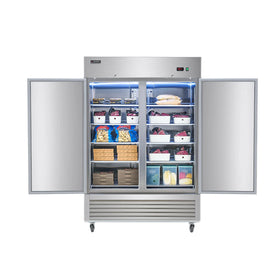After a long, exhausting day, what helps you unwind the most? Maybe it’s a hot shower, a sip of warm tea or soup, that long-awaited favorite snack, or a comforting homemade meal. The moment you taste it, a wave of relaxation and contentment washes over you.
That’s the magic of Comfort Food — it’s not just about filling your stomach, but about soothing your soul. Comfort food brings warmth, familiarity, and emotional relief, often even more satisfying than the feeling of being full.
In this guide, we’ll explore what comfort food is, what makes certain dishes feel comforting, and how to discover your own personal comfort foods — getting you ready to dive into future comfort food recipes.
What Is Comfort Food, Really?
What is your comfort food meaning?
Comfort food refers to dishes that provide emotional satisfaction and psychological comfort. It’s the food you turn to when you’re tired, stressed, or feeling down — something that makes you feel safe, warm, and relaxed.
Its appeal isn’t just about taste. Comfort food often carries emotional memories — maybe it’s the soup you loved as a kid, or that dish your family always made for gatherings. Eating it brings you right back to those cozy moments.
What Are Considered Comfort Foods?
People often ask, “What are considered comfort foods?” While everyone’s list is different, most comfort foods tend to share these qualities:
-
Familiar flavors that spark childhood or hometown memories
-
Rich, hearty taste and texture
-
Usually served warm, like soups, stews, casseroles, or pasta dishes
-
Sweet treats like pudding, cake, or cookies
Personal experience, cultural background, and taste preferences shape what feels comforting to each person. For some, it’s a creamy dessert; for others, it might be a simple bowl of hot soup or stew.

What Makes a Food a Comfort Food?
What makes a food a comfort food? Typically, these are the main factors:
-
Emotional connection: Tied to specific memories or meaningful experiences
-
Familiarity: Flavors and textures that feel safe and reassuring
-
Emotional satisfaction: Eating it brings happiness and calm
-
Convenience: Easy to make or always available at home
Psychological studies show that comfort foods can help regulate emotions, not just satisfy taste buds. Having ingredients ready in your reach in refrigerator or glass door refrigerator ensures you can make your favorite comfort dishes right when you need them most.
How to Discover Your Own Comfort Foods
Not sure what your comfort foods are? Try exploring with these steps:
-
Notice which foods lift your mood when you’re tired or feeling down
-
Recall childhood meals or family dishes that made you feel warm and happy
-
Pay attention to what you naturally crave when you’re resting or relaxing
Comfort Food Across Cultures
Comfort food looks different around the world. Americans often love cheesy casseroles or brownies, while people in Japan might crave hot ramen, and those in China may turn to slow-simmered soups or congee.

No matter where you’re from, the essence of comfort food is the same — familiar, warm, and satisfying, offering a brief sense of relief and happiness.
Keeping ingredients ready in a reach in refrigerator or glass door refrigerator makes it easy to prepare these comforting dishes on a whim. Whether it’s hot soup or a chilled dessert, you’ll always be ready to make the food that brings you joy.
Final Thoughts
The beauty of comfort food lies in how it warms the heart while pleasing the palate. By understanding what comfort food means, what counts as comfort food, how to identify your own comfort foods, and what makes a dish comforting, you can better recognize and appreciate the dishes that truly nourish you emotionally. Stocking ingredients in a reach in refrigerator or glass door refrigerator ensures they’re fresh and ready, making it simple to cook whenever the craving strikes.
In the upcoming articles, we’ll share specific comfort food recipes — from easy homemade meals to creative desserts — so you can enjoy your personal taste of comfort anytime.










